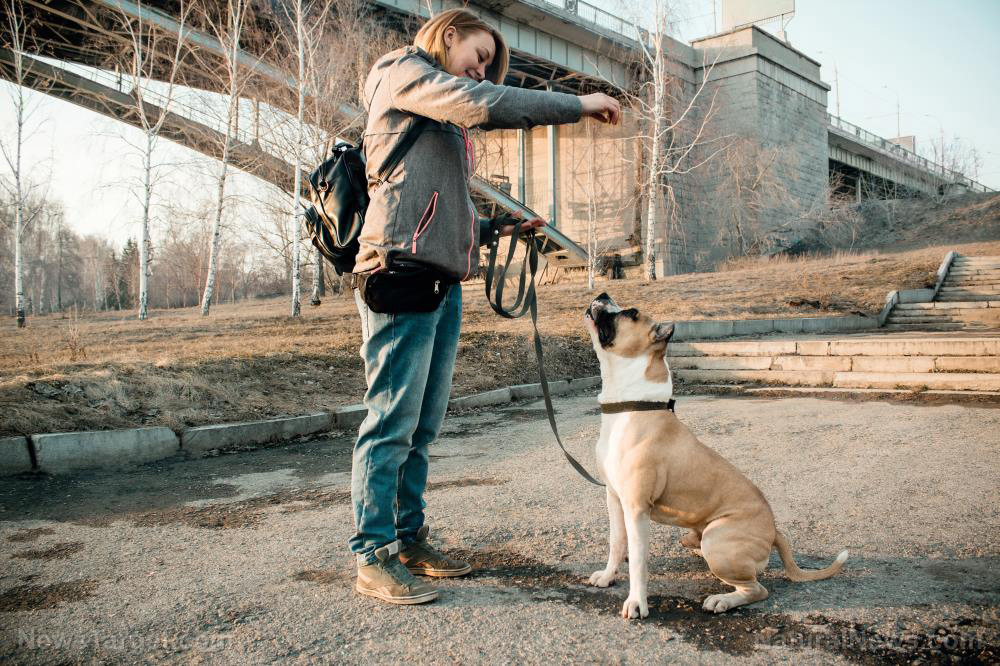Virtual dog could soon be used as an educational tool to prevent dog bites
11/16/2018 / By Mary Miller

There is a reason why dogs make such good guards. As natural carnivores, their jaws are capable of exerting immense pressure on anything they bite. Even friendly dogs have been known to bite small children who don’t know how to properly handle them. Thankfully, new developments in technology may help teach people how to prevent dog bites, an article on ScienceDaily reported.
The World Health Organization reports that around 4.5 million Americans are bitten by dogs every year. Children are at the highest risk for dog bites due to their small stature and inexperience in handling dogs. They may not realize when a dog is displaying signs of aggression and signaling that they do not want to be approached. Dogs may even bite unprovoked due to diseases such as rabies. Dog bites are clearly a cause for concern and learning how to prevent them will be very beneficial to anyone who comes into regular contact with dogs. Fortunately, the University of Liverpool‘s Virtual Engineering Centre (VEC) may have provided a solution for this.
The VEC created a proof of concept virtual reality (VR) experience that will allow a person to interact with a virtual simulation of a dog showing signs of aggression in a safe and controlled manner. They collaborated with Dogs Trust and University of Liverpool animal behavior researchers to bring this innovative project to life.
Virtual reality is defined as an artificial three-dimensional environment created with computer graphics that a person can explore and interact with. Since the environment is artificial, it can be used to simulate an otherwise dangerous situation with no actual danger involved. By immersing one’s self into this artificial simulation, a person can learn how to properly react to the dangerous situation. In the case of the VEC’s virtual dog project, the intent is to teach adults and children how to recognize specific aggressive behaviors exhibited by dogs, which could potentially result in an attack if not correctly identified. (Related: Virtual reality now being used for pain intervention and PTSD treatment.)
Virtual reality as an educational tool
With innovative application, virtual reality has almost limitless potential. It can be utilized in fields such as architecture, healthcare, media, and entertainment. The organization Dogs Trust wanted to push the limits of digital technology further and use virtual reality as a valuable educational tool to demonstrate the range of stress and threat behaviors dogs typically display. Learning how to identify these behaviors is crucial in the prevention of potential dog attacks.
To ensure that the body language and details of the virtual dog were both realistic and an accurate depiction of real-world canine behavior, the VEC consulted with a team of animal behavioral specialists and psychologists from the university.
The virtual dog’s behavior reacts directly to the actions of the user in the simulation. As the user draws nearer to the dog, its body language adjusts accordingly, exhibiting signs of aggression. These signs may include licking its lips, lowering its head and body, lifting its front paw, growling, and baring its teeth. These behaviors are based on the Canine Ladder of Aggression which shows how a dog may behave when it does not want to be approached.
How to prevent dog bites
There are useful ways to prevent dog bites, whether provoked or unprovoked. Some involve deescalating the situation based on the Canine Ladder of Aggression, while others involve what to do if you are attacked. Here are some helpful tips in preventing dog bites:
- Avoid all stray dogs. If you come across an unfamiliar dog, it is best to stay away. You don’t know how it might react or if it might be carrying rabies. If it approaches you, remain motionless and avoid direct eye contact.
- Avoid looking aggressive. Facing a dog directly can make you appear aggressive to a dog. Instead, stand with the side of your body facing the dog and slowly back away.
- Ask an owner’s permission. If you know the owner of the dog, always ask the owner’s permission before approaching the dog. Some trained dogs will allow even strangers to pet them, but other dogs may not like being touched at all.
- Curl into a ball. If a dog knocks you over, even accidentally, curl into a ball with your head tucked and your hands over your ears and neck to avoid getting bitten.
If you want to learn more about virtual reality and its applications, you can read more articles by going to VirtualReality.news.
Sources include:
Tagged Under: animal attacks, animal behavior, animal bites, breakthrough, canines, dog behavior, dog bites, dogs, future science, innovation, inventions, Pets, rabies, science and technology, virtual dog, Virtual reality



















